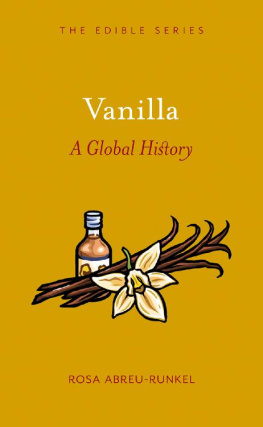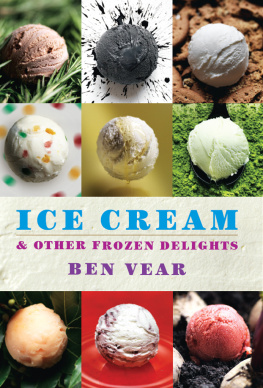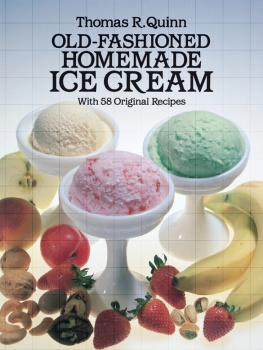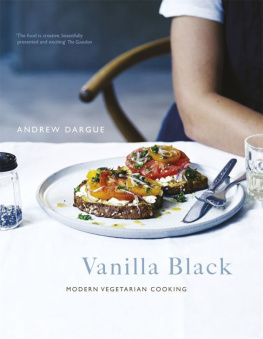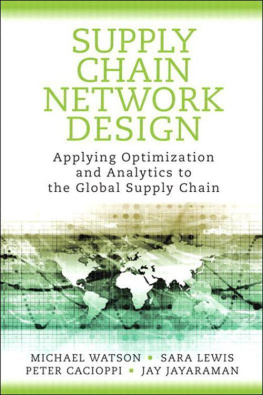Thank you for downloading this Simon & Schuster eBook.
Join our mailing list and get updates on new releases, deals, bonus content and other great books from Simon & Schuster.
C LICK H ERE T O S IGN U P
or visit us online to sign up at
eBookNews.SimonandSchuster.com
We hope you enjoyed reading this Simon & Schuster eBook.
Join our mailing list and get updates on new releases, deals, bonus content and other great books from Simon & Schuster.
C LICK H ERE T O S IGN U P
or visit us online to sign up at
eBookNews.SimonandSchuster.com

Simon & Schuster
1230 Avenue of the Americas
New York, NY 10020
www.SimonandSchuster.com
Copyright 2016 by Sarah Lohman
All rights reserved, including the right to reproduce this book or portions thereof in any form whatsoever. For information, address Simon & Schuster Subsidiary Rights Department, 1230 Avenue of the Americas, New York, NY 10020.
First Simon & Schuster hardcover edition December 2016
SIMON & SCHUSTER and colophon are registered trademarks of Simon & Schuster, Inc.
For information about special discounts for bulk purchases, please contact Simon & Schuster Special Sales at 1-866-506-1949 or .
The Simon & Schuster Speakers Bureau can bring authors to your live event. For more information or to book an event, contact the Simon & Schuster Speakers Bureau at 1-866-248-3049 or visit our website at www.simonspeakers.com.
Interior design by Ruth Lee-Mui
Illustrations by Peter Van Hyning
Jacket design by Janet Hansen
Jacket images by Floortje / David Arky / Brian Balster / Getty Images
Library of Congress Cataloging-in-Publication Data
Names: Lohman, Sarah, author.
Title: Eight flavors : the untold story of American cuisine / Sarah Lohman.
Description: New York : Simon & Schuster, [2016]
Identifiers: LCCN 2016040059 (print) | LCCN 2016043818 (ebook) | ISBN 9781476753959 (hardcover) | ISBN 9781476753966 (trade pbk.) | ISBN 9781476753980 (ebook) | ISBN 9781476753980 (eBook)
Subjects: LCSH: Cooking, American. | Flavor. | LCGFT: Cookbooks.
Classification: LCC TX715 .L795 2016 (print) | LCC TX715 (ebook) | DDC 641.5973dc23
LC record available at https://lccn.loc.gov/2016040059
ISBN 978-1-4767-5395-9
ISBN 978-1-4767-5398-0 (ebook)
This book is dedicated to the memories of
DR. CHARLES BERGENGREN
and
JOSH OZERSKY
Contents
Introduction
History Has a Flavor
IT WAS THE year 2000, and I celebrated posthigh school freedom by driving my light-blue-and-rust-colored Toyota Corolla maybe a little too fast and playing my Ben Folds Five album just a little too loud. I was eighteen and headed to my summer job, a job that allowed me to travel back in time.
Those June mornings were beautiful. I descended down winding country roads into Ohios Cuyahoga River Valley, the suns rays the electric peachy color of dawn, the air already thick with the rising humidity. The smell of hay and manure breezed in through my rolled-down window when I finally pulled into the parking lot.
I would emerge from my car and smooth the front of my light pink and blue paisley dress, which reached to the floor. To make the skirt stand out to the appropriate proportions, I wore a large, poufy crinolineof the type that goes under a wedding dresstopped by several starched petticoats. The dress was never meant for driving, and cramming my skirts around the gear shift proved challenging. One morning I unknowingly drove all the way to work with my hem slammed in the door.
It was a unique uniform, but appropriate. I worked at a large, outdoor museuma collection of historic houses, brought together from all over northeastern Ohio, for the purpose of preservation. Set about a village green, they functioned as a fabricated historical town, a re-creation of what life was like in 1848. Wethose of us driving into the valley in our petticoats and waistcoatswere employed as denizens of this town, living history characters. Our stories were fictionalized, but created from the factual lives of real people from the past. I spent five days a week, eight hours a day, in costume, in character, in this museum.
That was how I spent the first four summers of my employable life. Putting on petticoats, learning cross-stitch (I loathed it), and pretending it was perfectly normal to have hundreds of tourists a day stop by for a visit. I had a home, with an assigned family groupwho are still like brothers and sisters to meand the woman who played my mother was my mother. I spent so much time living in the past that aspects of my work life began to slip into my real life. Like the time I greeted my server at Applebees with a hearty Good day! instead of Hello!
In high school history classes, I had learned about the past as a series of dates, laws, and battles. But my job immersed me in history, and taught me that the past was three dimensional; I could only begin to understand it by using all of my senses. The most important place in my workday life was the kitchen of my historic home. We cooked on a wood-burning stove every day, using recipes from the mid-nineteenth century. When the morning was chilly, we gathered in the kitchen to watch my brother light the fire. The kitchen smelled like wood smoke, fresh coffee, and my brothers cigarettes.
Each morning, we sipped tea and made plans for the day, until the first museum visitor came knocking at our door. Then the houses cook took over the kitchen table, her red hair swept back in a bun, her sleeves rolled up. She spread out her ingredients and scrutinized 150-year-old recipes. By lunch, we would sit around the table, eating buttery macaroni and cheese flavored with a generous grating of nutmeg, fricasseed chicken with marjoram, and hunks of cake full of raisins and currants, perfumed with brandy and rose water.
One day the cook was out sick, and I begged to take her place. The foodways director didnt usually welcome newcomers in the kitchen, but this time she said yes to me. I busted my butt to produce the most perfect pound cake that dayaccomplished, mind you, with 1840s technology and in front of the probing eyes of the visiting public. It was nerve racking. When the director came back that afternoon to inspect my work, she gave me the subtlest nod of approval. I cant say that I was in after thatespecially since, immediately afterward, I burnt an entire tray of cookies to an unidentifiable crisp. But I was granted permission to cook from time to time. The experience of working with those nineteenth-century recipes changed the way I thought about American food.
What stuck in my head about that first 1848 cake I baked was that it wasnt flavored with vanilla. It had all of the other ingredients of a modern cake, from white sugar to butter, but it was flavored with a teaspoon or more of rose water .
I had never encountered the flavor of rose water before. It imparted a bright, citrus note to the cakes and cookies I baked. I found out later that its made by distilling a mixture of alcohol, water, and damask rose petals. The alcohol and essential oils evaporate, leaving behind rose-scented water used to flavor food. Brought to Europe during the Middle Ages from the Middle Eastin the cultural exchange following the Crusadesrose water was used in English cooking for hundreds of years before colonists brought it to North America. Bakers in the late eighteenth and early nineteenth centuries used rose water the same way we use vanilla today: a teaspoon in a cake, a dash or two in pumpkin pie, even a tablespoon with stewed fruits. Today we associate rose water only with imported or immigrant foodslike yogurt drinks and milk-based desserts from Indiawith no memory that in 1800, using a tablespoon in apple pie would have been as American as the apple pie itself.
Next page


